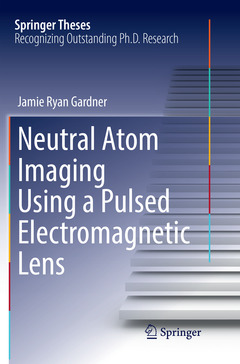Description
Neutral Atom Imaging Using a Pulsed Electromagnetic Lens, Softcover reprint of the original 1st ed. 2018
Springer Theses Series
Author: Gardner Jamie Ryan
Language: English
Approximative price 105.49 €
In Print (Delivery period: 15 days).
Add to cartPublication date: 08-2018
Support: Print on demand
Approximative price 105.49 €
In Print (Delivery period: 15 days).
Add to cartPublication date: 11-2017
Support: Print on demand
Description
/li>Contents
/li>Biography
/li>Comment
/li>
Nominated as an outstanding Ph.D. thesis by the University of Texas, Austin
Offers key insights into the creation of an aberration-corrected, neutral-atom lens
Presents potential applications in a range of fields, including nanofabrication and surface microscopy
Illustrates the complete process of construction and characterization of a prototype lens
These books may interest you

Advanced Optical Imaging Theory 210.99 €



